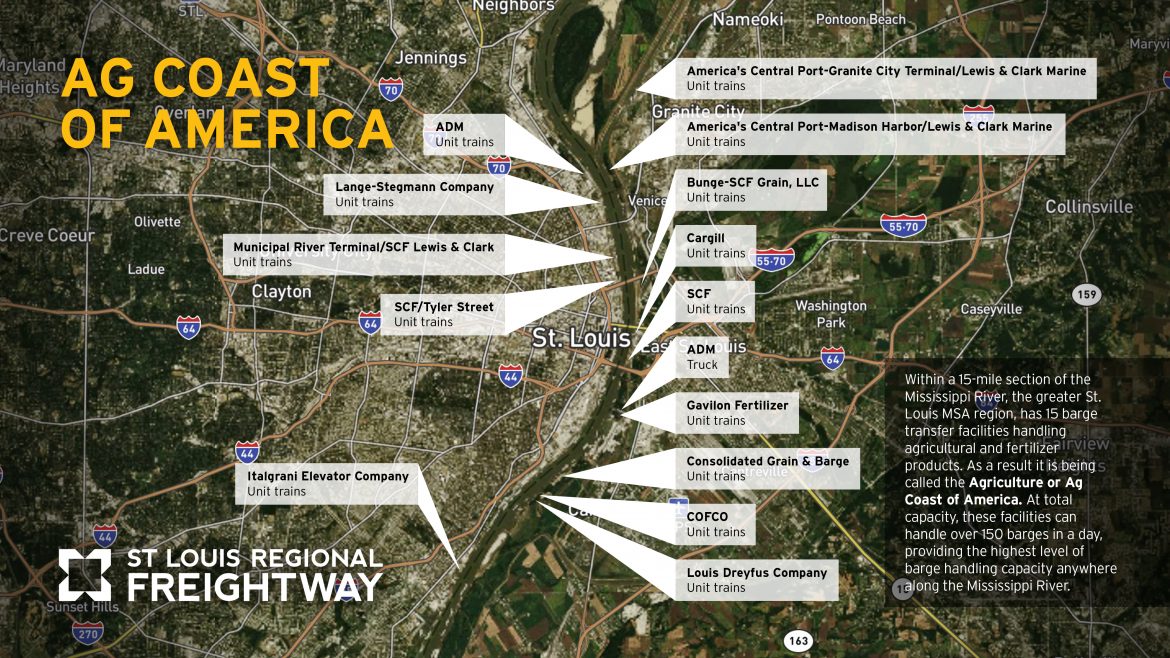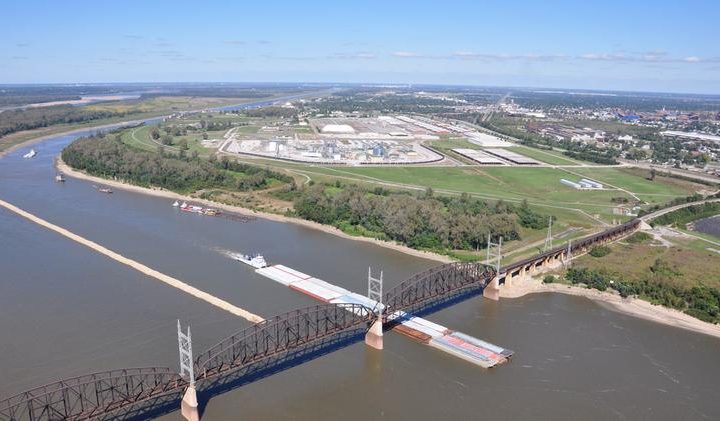
Located in the heartland of America, a 15-mile section of the Mississippi River in the greater St. Louis metropolitan statistical area (MSA) delivers the highest level of grain barge handling capacity anywhere along the Mighty Mississippi. In fact, it is now being called the “Agriculture (Ag) Coast of America” in terms of inland barge transfer facilities for fertilizer and agriculture products. Within this 15-mile section, the region has 15 barge loading facilities that support more than 100 barges a day with unit train capabilities. The high concentration of ports, river terminals, and barges that move high annual volumes of fertilizer and agricultural commodities have helped the St. Louis region secure the top ranking among inland fertilizer and agriculture product barge loading facilities. The specialized handling facilities within this section of the river have experienced a tremendous increase over the past three decades. Growth in capacity comes as the demand for agricultural exports continues to increase, and these facilities are earning recognition as a more cost-effective and efficient means to transfer products for shipment to the Port of New Orleans, compared to other areas north of the St. Louis region such as Davenport, Iowa and Peoria, Ill. Additionally, the region’s rail industry helps support the cost-effective freight rates. The region’s rail switching carrier, Terminal Railroad Association of St. Louis, and six Class I railroads have unit train capabilities that carry 110 to 125 rail cars moving as a group rather than individually, reducing time to assemble and disassemble trains. One of the more recent barge handling facilities that has come on line is China’s state-owned grain and food processing manufacturer and trader – China National Cereals, Oils and Foodstuffs Corporation (COFCO International). China has become one of the United States’ largest agricultural export markets, prompting COFCO’s purchase of its first inland agriculture barge transfer facility in the interior of the U.S. in Cahokia, Ill. In addition, permits have been submitted for an additional barge transfer facility that would further increase the St. Louis region’s capacity to handle even more grain and other agricultural products in the future. In total, the region has invested more than $200 million in agricultural product barge transfer infrastructure facilities since 2005 and close to $1 billion in roads and bridges since 2010 and stands ready to support both national and global markets. The Freightway encourages all shippers and carriers to take advantage of one of the nation’s most efficient freight hubs, its low barge freight rates, and multimodal connectivity.




